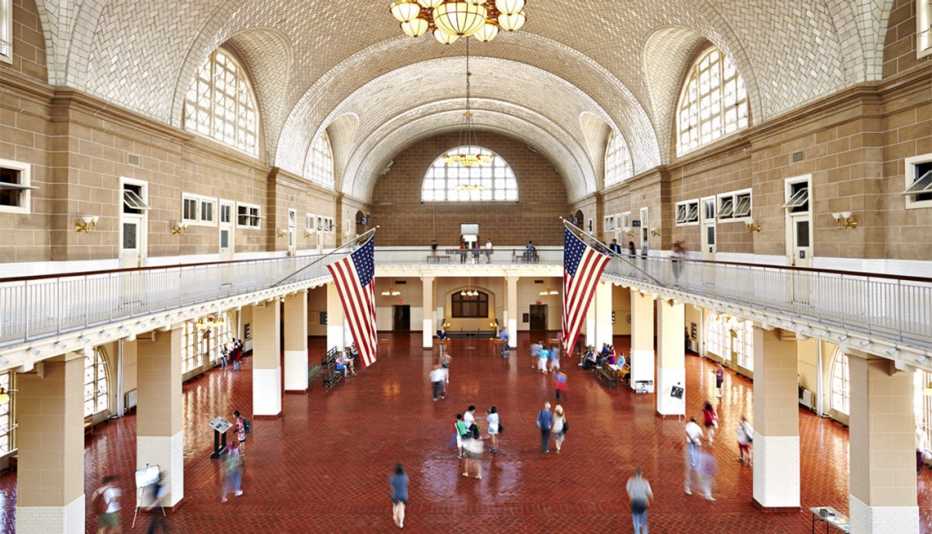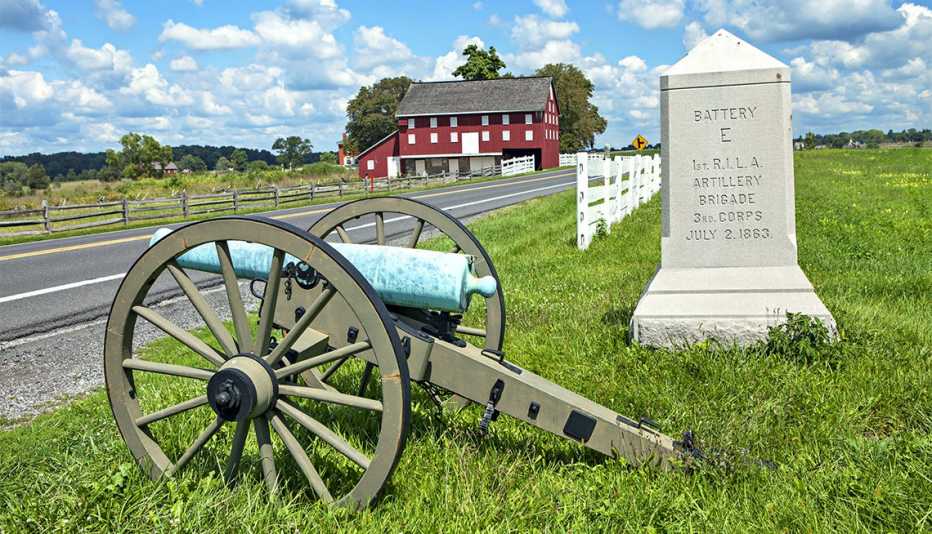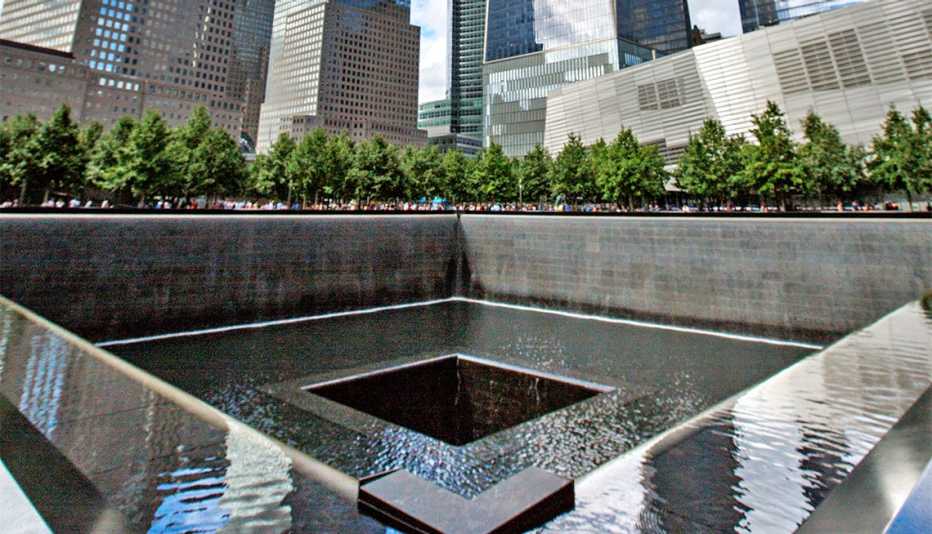AARP Hearing Center


When you think of a pilgrimage — a trip with deep personal meaning — destinations such as Mecca or the Vatican might come to mind. But the United States has many sites that attract visitors who travel with purpose. Here are some to consider.


Ellis Island
New York Harbor
“Her journey was made real for me.”
So many families, so much history, so many names on that curving wall with the Statue of Liberty in the background. About 40 percent of Americans can trace an ancestor’s arrival and journey through Ellis Island, the transit point for millions of immigrants seeking to escape war, poverty or persecution in Europe. Here, they were granted their American dream.
They were people like Joyce Marcel’s grandmother Lena Kagan, who arrived at Ellis Island in 1908, at age 16. To escape Jewish persecution in Ukraine, Lena traveled by foot across mountains to board a ship bound for America. Marcel, 82, of Dummerston, Vermont, made a pilgrimage in 2017.
“Her journey was made real for me,” she says. “I remember my grandmother telling me how she practiced reciting her false names and birth dates in case they were stopped by the Cossacks. I’ve been kicking myself now that she’s gone that I didn’t ask more questions.”
From 1892 to 1924, more than 12 million immigrants were processed at Ellis Island. Today, this site in New York Harbor, operated by the National Park Service, includes a museum that draws millions of visitors per year.
The centerpiece of the grounds is the American Immigrant Wall of Honor, where nearly 1 million names are etched into stainless steel; pilgrims come to see their family name. Visitors can research their ancestry on the American Family Immigration History Center database, which contains some 65 million records. —Robin Westen
If you go Newark Liberty International is the closest of the New York area’s airports. There is a ferryboat ride to Ellis Island from Lower Manhattan. Go to nps.gov/elis for information about fees.


Gettysburg
Pennsylvania
“It’s truly hallowed ground.”
Few events hold such a consequential place in American history as the Battle of Gettysburg. A turning point in the Civil War, the three-day battle was its bloodiest, with more than 51,000 casualties.
No surprise that pilgrims are attracted to these grounds. “It has a double-barreled significance,” says Jason Martz, communications specialist for the Gettysburg National Military Park, which is managed by the National Park Service. “You want to walk in your ancestor’s footsteps, see the biggest battlefield, which is still shaping the country as we speak, and it’s the site of Lincoln’s Gettysburg Address.”
John McPherson, 76, of Brattleboro, Vermont, recently learned that his great-grandfather was abolitionist Thaddeus Stevens’ law partner in Gettysburg and made a pilgrimage there to see his extended family’s burial places. “People say ‘hallowed ground,’ and it’s true. I suddenly had a sense that I had returned home.”
Visitors with distant connections to soldiers, from North or South, can make pilgrimages to the military park, walking past more than 1,300 monuments, markers and memorials and approximately 150 historic buildings. “We have a renowned guide program here,” says Carl Whitehill of Destination Gettysburg. “They ask you where you’re from to try to connect you to your own family history, where the boys from your hometown fought. When you humanize the battle, it’s very impactful.” —Veronica Stoddart and Robin Westen
If you go Harrisburg International Airport is a 50-minute drive away. The battlefield is free to visit. There are fees for other attractions. Battlefield bus tours cost about $40.


9/11 Memorial
New York City
“It’s a quiet place, respectful.”
Gordon Haberman has traveled with his wife from Wisconsin to the 9/11 Memorial nearly every year since it opened in 2011. Their daughter, Andrea, was in the World Trade Center for a business meeting, among the nearly 3,000 people who died in the Sept. 11, 2001, terrorist attacks. “We gravitate, of course, to Andrea’s name on the north fountain,” Haberman, 73, says. “Every year on the 11th, they close the plaza and museum to just family members [for part of the day]. And those times are more poignant, because everybody’s in the same situation. It’s a quiet place, respectful.”
The power of the plaza — which has drawn more than 72 million visitors — comes not only from its location but its design. There are two pools, each about an acre, where the twin towers once stood. The square black cavities are surrounded by bronze parapets with 2,983 victims’ names inscribed on them. The open space and reflecting pools “frame the enormous absence created,” says Cliff Chanin, director of the 9/11 Memorial Museum.
James Wittig, M.D., worked with a medical team at Ground Zero and gave the museum his 9/11 artifacts — which he’d sealed in a bag for 21 years. In 2022, he traveled there from his home in Morristown, New Jersey. “It was such a relief not only to release my sadness and negative energy but to remember how everybody came together.” —Ken Budd
If you go You can fly to LaGuardia Airport. Take a taxi to Lower Manhattan. Museum admission ranges from $21 to $33. Retired U.S. military enter for free.


































































You Might Also Like
Secrets From a Flight Attendant
From which apps to download before you fly to what you should look for in security lines and more, we have tips
Ways to Save on Your Next Vacation
Travel industry pros share tips to help you keep costs down, without skimping on fun
Be a Citizen Scientist
Find out how you can help staff at national parks by collecting water samples, identifying invasive species and more
More Members Only Access
Enjoy special content just for AARP members, including full-length films and books, AARP Smart Guides, celebrity Q&As, quizzes, tutorials and classes
Recommended for You